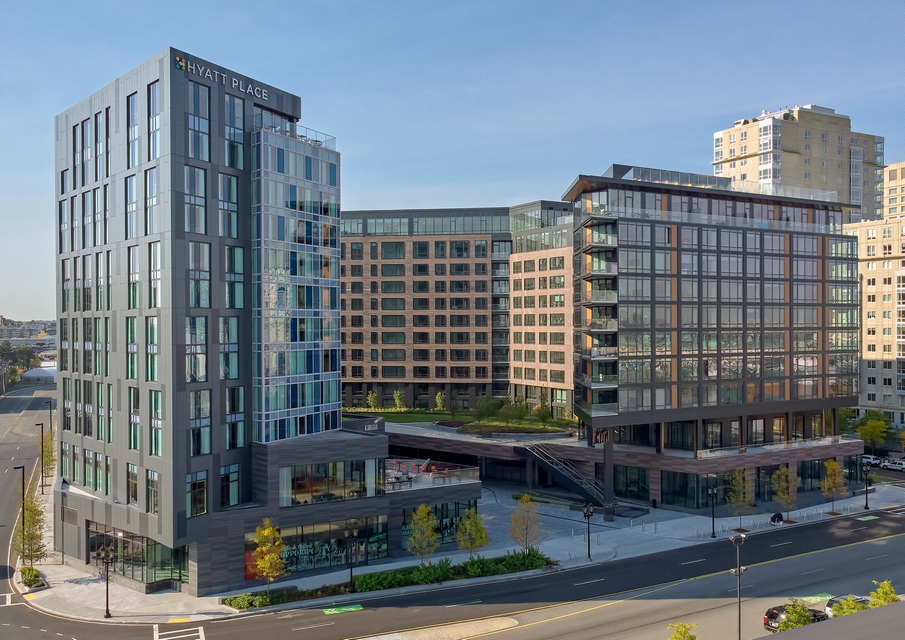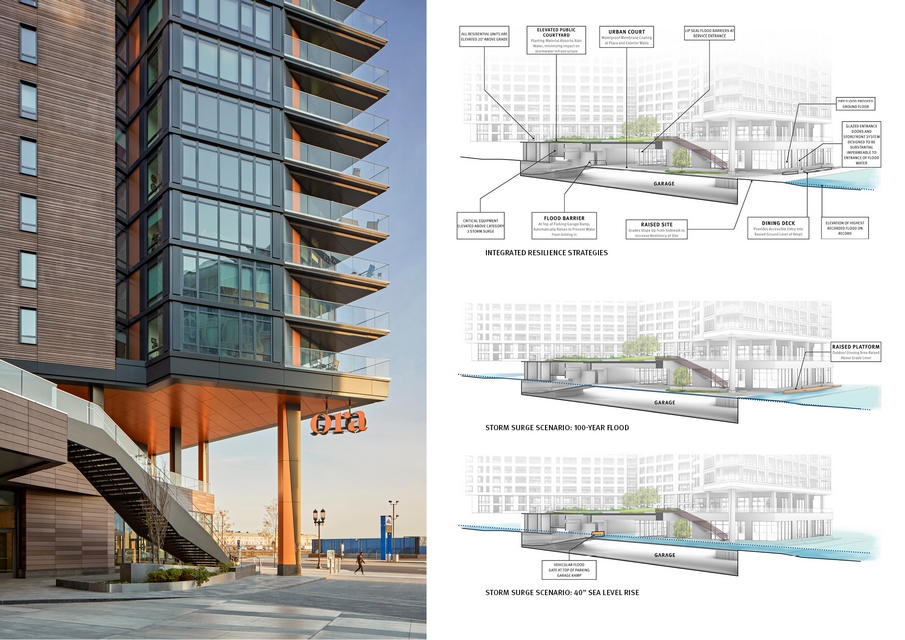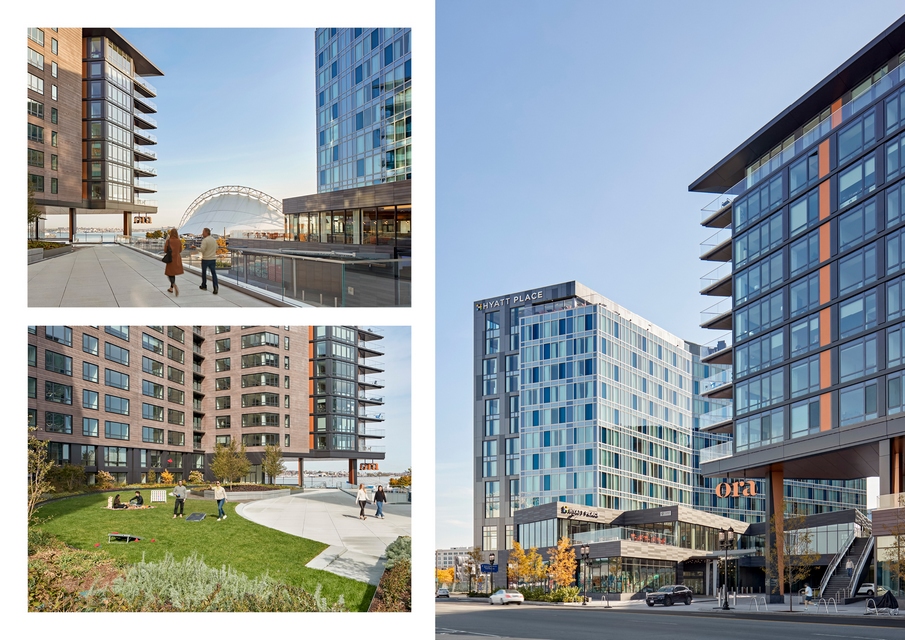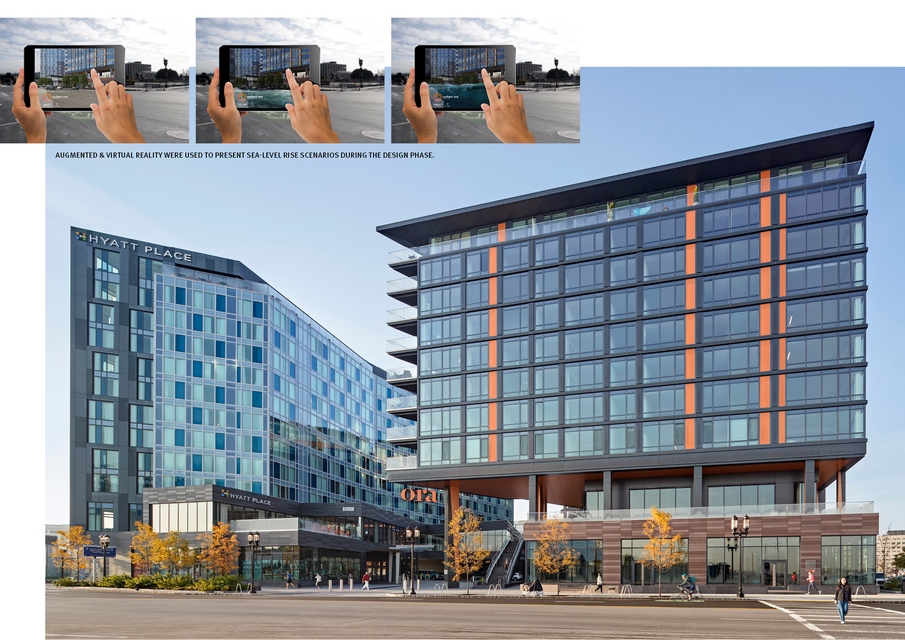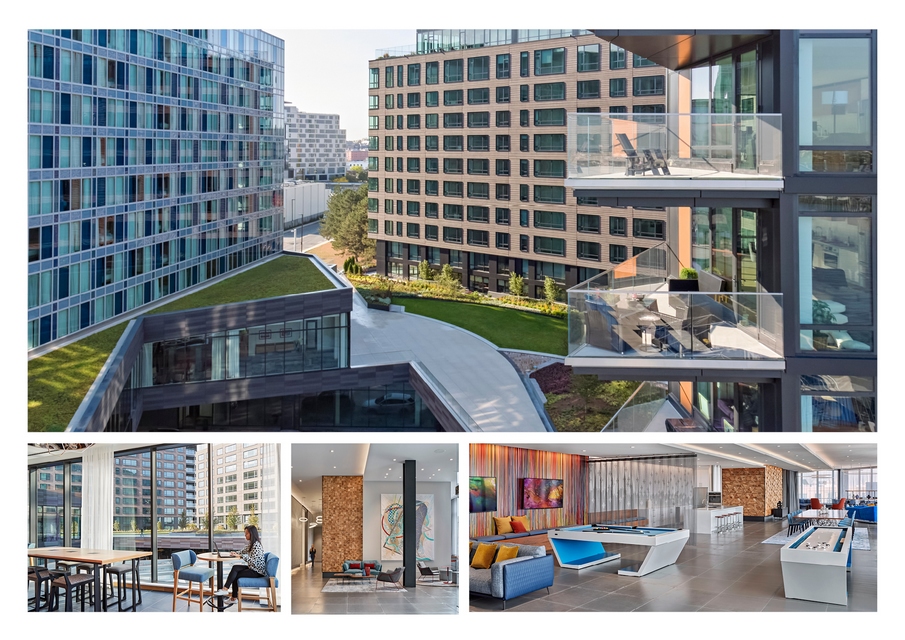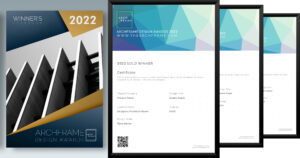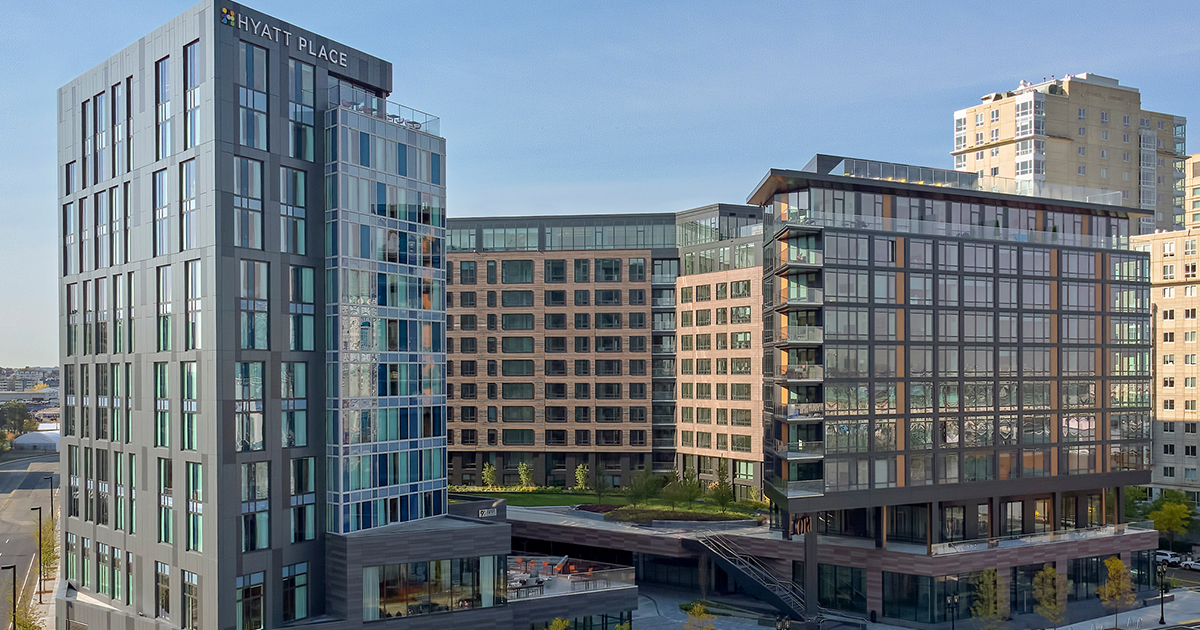
A primary focus of this 500,000 square foot development is to set a standard for community-oriented urban design that addresses the resiliency challenges of building along the waterfront. To resolve these unique challenges, the architecture and landscaping address the site’s immediate needs while incorporating long-term resiliency strategies through interwoven public spaces and phytoremediation.
Gold Winner – Archframe Design Awards 2021
Design Firm – Arrowstreet
Project Title – Ora Seaport
Project Category – Housing Multi-Family
Status – Built
Architect/Designer – Arrowstreet
Design Team – Amy Korte, David Bois, Greg Triplett, Joe Sirkovich, Sallyann Thomas Farnum, Jim Flajnik, Kate Bubriski, Christine Dilallo, Bridgette Doherty, Le Nguyen
Practice – Professional Architect
Country – United States
The project is the first within Boston to use passive flood barrier gate technology. This four-foot-tall passive flood barrier gate protects the lower parking level and is recessed in the concrete floor at the top of the garage entry ramp. The gate is only activated by rising water. The extrusions are designed to be structural while also providing excellent flotation. The rising floodwaters create the hydrostatic pressure to float the buoyant aluminum beam and flip it into a vertical position.
With resiliency measures a critical consideration, the interior and exterior architecture celebrates the site’s proximity to the water. Designed as an experience, the building is comprised of a sequence of spaces that unfold, revealing themselves to you navigate from the interior to exterior. A monumental outdoor staircase and a significant structural cantilever frame an outdoor terrace, providing space for a restaurant and recreation. Outdoor rooms, coupled with a series of roof decks, create a vertical neighborhood on the building façade and a dynamic street edge to take advantage of water views and a popular performance pavilion across the street.
Landscaping elements such as planters, sloped walks, and walls that can double as outdoor seating integrate into the raised entry areas and seamlessly raise the ground floor’s elevation to further protect it from flooding. These passive systems eliminate the need for more traditional deployable flood barriers and fences that would require assembly around the entire building.
During the design phase, we presented sea-level rise scenarios using virtual and augmented reality to help the client fully understand the probable flood impacts on the development. This process allowed the design team to vividly describe a measured and passive response.
